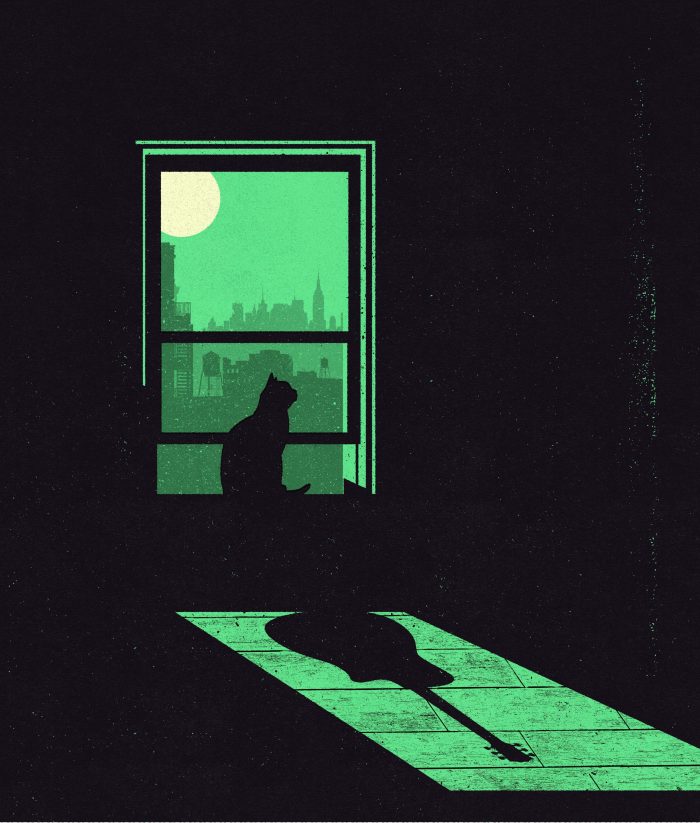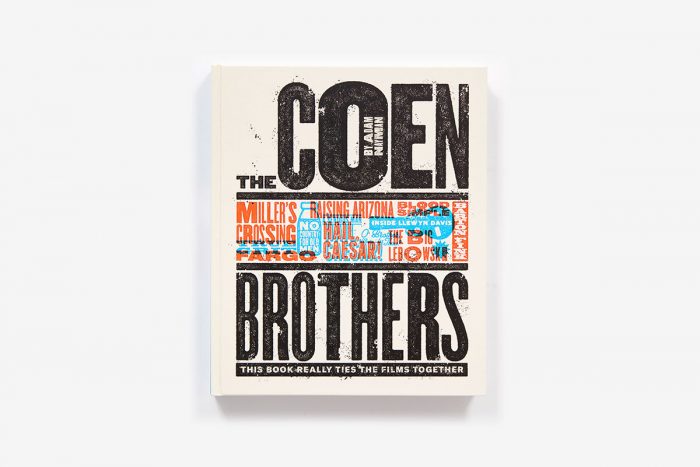Exclusive Excerpt: ‘The Coen Brothers: This Book Really Ties the Films Together’ Goes ‘Inside Llewyn Davis’
With The Coen Brothers: This Book Really Ties the Films Together, film critic Adam Nayman takes readers on a journey through the singular filmography of Joel and Ethan Coen. From Blood Simple through Hail, Caesar!, Nayman chronicles what it is that makes the work of the Coens so incredible. “To move back and forth through the Coens’ career is to get caught in the loop,” Nayman writes in the Introduction, “like riding a merry-go-round through a house of mirrors.”
One of the joys of reading Adam Nayman’s The Coen Brothers is to be consistently reminded of how remarkable their work is. As I moved from one chapter to the next, it felt like someone switching a series of lights on in my head. To move from Blood Simple to Raising Arizona to Miller’s Crossing to Barton Fink is like a whirlwind of wonder – it’s almost unfathomable that this set of filmmakers could turn out so many consistently iconic films. And yet that’s exactly what they did. Even the rare Coen misfires – the screwball comedy Intolerably Cruelty and the remake The Ladykillers – have their moments. The Coen Brothers can count themselves among the small list of the most extraordinary American filmmakers to ever work in the genre. And reading through The Coen Brothers: This Book Really Ties the Films Together is a testament to their talents.
Through critical analysis, biographical details and interviews with those who’ve worked closely with the Coens, Nayman strives to find “some Grand Unified Theory of Coen-ness” throughout the masterful Coen filmography.
We have an exclusive excerpt from The Coen Brothers: This Book Really Ties the Films Together, plucked from the chapter on one of the Coens’ best films – Inside Llewyn Davis.
Inside Llewyn Davis
THE FILM DOESN’T really have a plot. That concerned us at one point; that’s why we threw the cat in.” So said Joel Coen at the 2013 Cannes Film Festival press conference for Inside Llewyn Davis, which went on to win the festival’s Grand Prix—the best Croisette result for the brothers since their Palme d’Or for Barton Fink. Even for those long since accustomed to the Coens’ downplaying of their own films’ intricacy, Joel’s comments were hard to take with a straight face.
The red mackerel tabby in question (portrayed by three different cats) is considerably more than a supporting player in Inside Llewyn Davis, and a very different sort of four-legged metaphor than the one in A Serious Man, where Schrödinger’s cat was used as an abstract illustration of the Uncertainty Principle. In Inside Llewyn Davis, the cat is a doppelganger for the title character, a luckless folk singer in early sixties New York who slinks through the city with self-su cient agility. When Llewyn (Oscar Isaac) takes the subway from the Upper West Side back to Greenwich Village the morning after crashing at the apartment of some friends—and accidentally letting their cat out after locking the door behind him—we watch the stations flash by from the animal’s wide, peering eyes, which are reflected in the train car’s glass as it sits on its new custodian’s shoulder.
Desperately calling his host’s o ce from a subway station platform, Llewyn gets drawn into a literal game of broken telephone. “Tell him Llewyn has the cat,” our hero pleads into the receiver. “Llewyn is the cat,” replies the receptionist brightly as his face crumples in frustration. She’s got it all wrong, except, of course, that she hasn’t. “Llewyn is the cat” is as succinct and accurate a way as any to describe a film about a feckless stray who goes o on an adventure and eventually finds his way home, and the Coens keep finding ways to cinch the link between man and beast. Bruised, cold, and looking for a place where he can stow his furry little problem for a few hours, Llewyn makes a beeline for the apartment of fellow singer (and ex-lover) Jean (Carey Mulligan), clambering up her fire escape and slinking in through an open window with feline grace.
If Llewyn is a cat, then he’s a tom who probably needs to be neutered. Upon Llewyn’s arrival, Jean furiously reports that she’s pregnant, demanding money that she knows her ex-lover doesn’t have for an abortion. Moving on from Jean, Llewyn— who has recently started working as a solo artist after the suicide of his recording partner, Mikey Timlin, and isn’t dealing well with the grief— proceeds to methodically alienate his remaining allies in New York. His manager, Mel (Jerry Grayson), is irritated by his client’s demands to see royalties on an album that isn’t selling. The prosperous Upper West Side academics Mitch and Lillian Gorfein (Ethan Phillips and Robin Bartlett), previously always happy to open their door to Llewyn after he’s had a rough night, are horrified when he brings their precious missing pet home and they discover that it’s been accidentally switched out for a female look-alike.
Dejected, he hitches a ride to Illinois with a heroin-addicted New Orleans jazzman (John Goodman) and his valet (Garrett Hedlund), and is forced to abandon the second cat by the side of the highway just outside Chicago, only to (maybe) encounter it again on the drive home. Finally, an insert shot near the film’s end shows an advertisement for Fletcher Markle’s live-action Walt Disney drama The Incredible Journey, in which a cat survives by its wits on a trek across “200 perilous miles of Canadian wilderness!” Walking past the movie theater, Llewyn stops and studies the poster with an expression of recognition.
With all this in mind, Joel Coen’s joke about the cat being an afterthought to the story of Inside Llewyn Davis reveals itself as such an untrustworthy assessment that it loops all the way back around to being an interpretive key. In lieu of a plot, the Coens use the cat(s) in Inside Llewyn Davis to sketch a pattern of loss, pursuit, deception, detour, and retrieval that doubles the main character’s impulsive physical trajectory with that of the animal constantly eluding his grasp, as well as to forge cultural connections beyond the narrative. For instance, it may seem to be a mistake for the Coens to include The Incredible Journey, a film that came out in 1963, in a movie whose climax depends on the action taking place in 1961. It’s worth noting, though, that 1963 was also the year that the French government placed an unusual animal into orbit 130 miles above the earth: a heroic cat named Felicette, who replaced a di erent cat who went missing minutes before blast-o and whose own incredible journey was overshadowed by Laika, the more famously anthropomorphized cosmonaut from the Soviet Union.
It is on this more ephemeral level of hints, allusions, and things left unsaid—the ingredients its creators just happened to “throw” into the mix—that Inside Llewyn Davis ranks among the Coens’ richest and most rewarding films. Its deep casualness mirrors that of The Big Lebowski, with important symbols passed o as incongruous non sequiturs and complex observations about ambition, artistry, and aloneness—the three major themes developed via Llewyn’s character and his various failures as a friend, a lover, and a performer—brocaded into its finely stitched audiovisual fabric.
Credit: The Coen Brothers: This Book Really Ties the Films Together, by Adam Nayman © Abrams Books, 2018
The post Exclusive Excerpt: ‘The Coen Brothers: This Book Really Ties the Films Together’ Goes ‘Inside Llewyn Davis’ appeared first on /Film.
from /Film https://ift.tt/2OA6gNa



No comments: